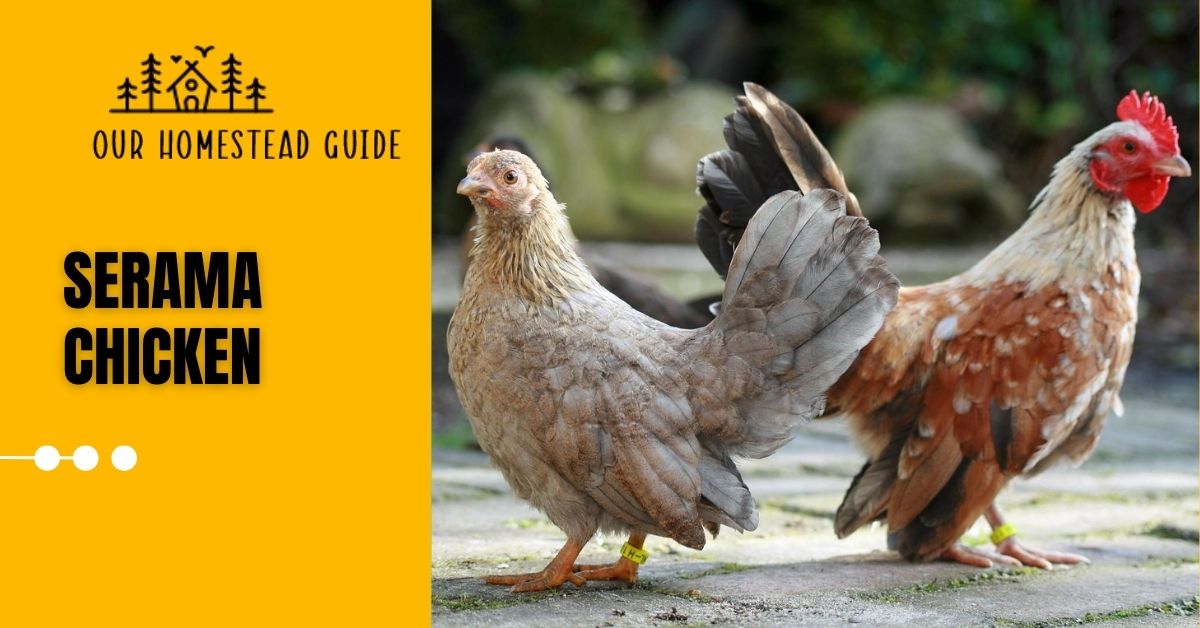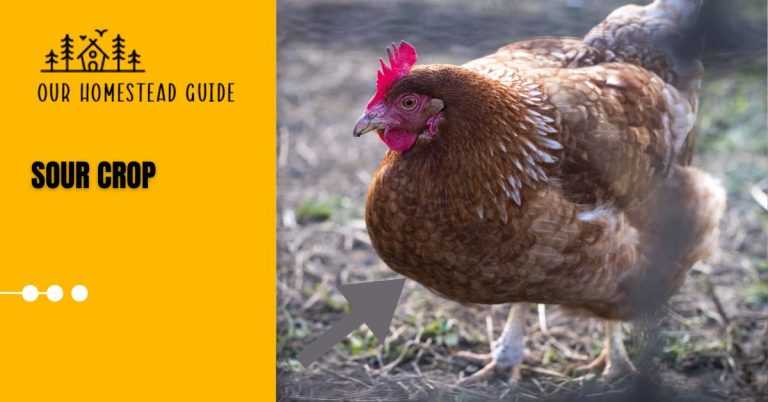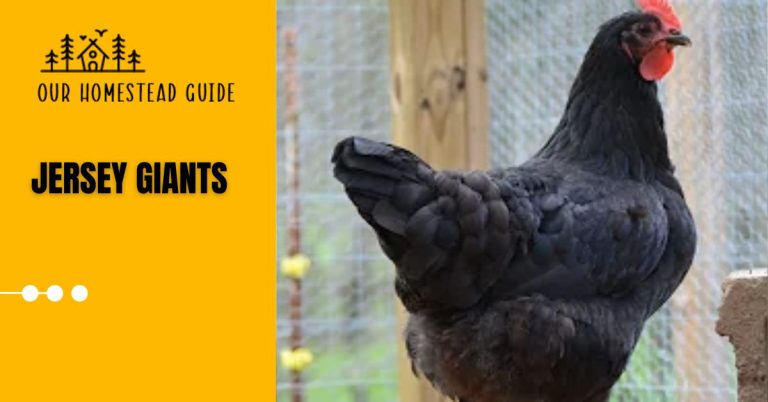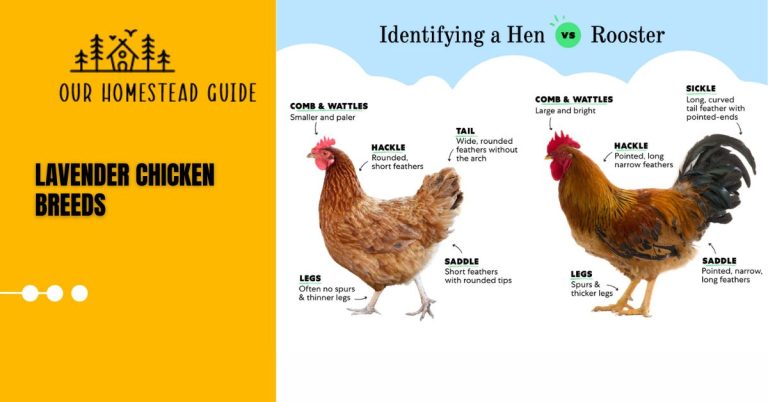Serama Chicken: Breed History, Size, Eggs, Health and Care
The Serama Chicken is a relatively new breed of chicken that is among the most fascinating. These little birds are thought to be exceptionally peaceful and sociable, and they have a distinctive look. When taken together, these qualities make the Serama a well-liked option for anybody passionate about hen husbandry.
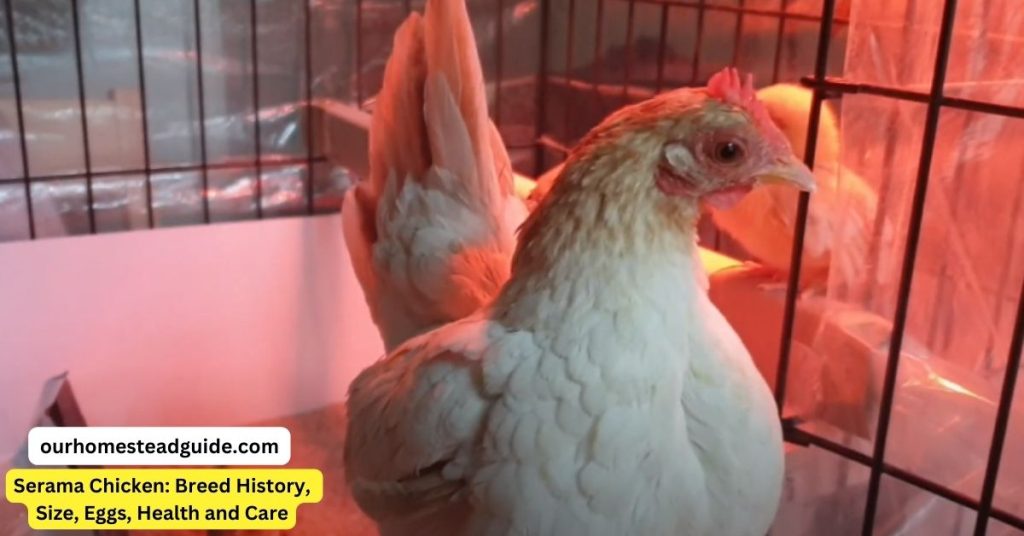
Serama Chicken: An Overview
| Aspect | Details |
|---|---|
| Origin: | Malaysia |
| Size: | Smallest recognized chicken breed (roosters: 6-8 inches, hens: 6-7 inches) |
| Weight: | Roosters: 10-18 oz, Hens: 8-14 oz |
| Appearance: | Upright posture, puffed chest, vertical tail feathers & wings, muscular body, various feather colors & patterns |
| Temperament: | Friendly, outgoing, curious, confident, can be chatty |
| Egg laying: | Good layers of small, white or tan eggs |
| Egg production: | Daily or every other day |
| Hardiness: | Heat tolerant, not cold hardy |
| Living space: | Secure backyard pen with covered run and coop |
| Diet: | Commercial chicken feed supplemented with fresh fruits & vegetables |
| Lifespan: | 5-8 years |
| Special needs: | Regular grooming, predator protection, winter heat source if necessary |
| Ideal owner: | Experienced or passionate chicken keepers seeking a unique and charming pet |
| Fun fact: | In Malaysia, Seramas are known as “archangel chickens” due to their elegant posture! |
History Of The Serama Chicken Breed
The Serama chicken has a complex history to match its majestic stance and small height. Here’s a brief overview of its tale:
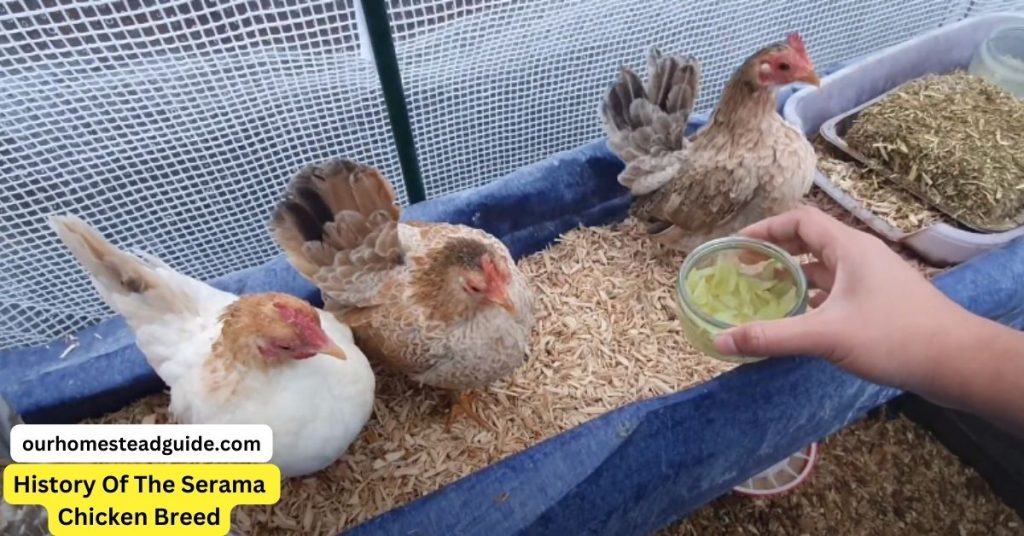
Sources:
- Although there are stories of older forebears, hard data indicates that the current Serama originated in Kelantan, Malaysia, in the 1970s.
- The breed was developed by dedicated breeder Wee Yean Een via selective breeding of Japanese and Malaysian bantams.
- According to legend, the name “Serama” pays homage to Raja Sri Rama, a Thai king renowned for his grace and formal posture—qualities that the chicken likewise has.
Development and Rise in Popularity:
The early stages of development were devoted to honing physical characteristics like as muscularity, erect posture, and excessive tail carriage.
In 1990, Seramas had their first official show in Malaysia, which launched the breed into the public eye.
Seramas became well-known around the world throughout the following 20 years, enthralling audiences with their distinct beauty and amiable dispositions.
Around the world, a plethora of organizations and associations have emerged with the sole purpose of breeding, promoting, and showcasing these little miracles.
Challenges and Controversies:
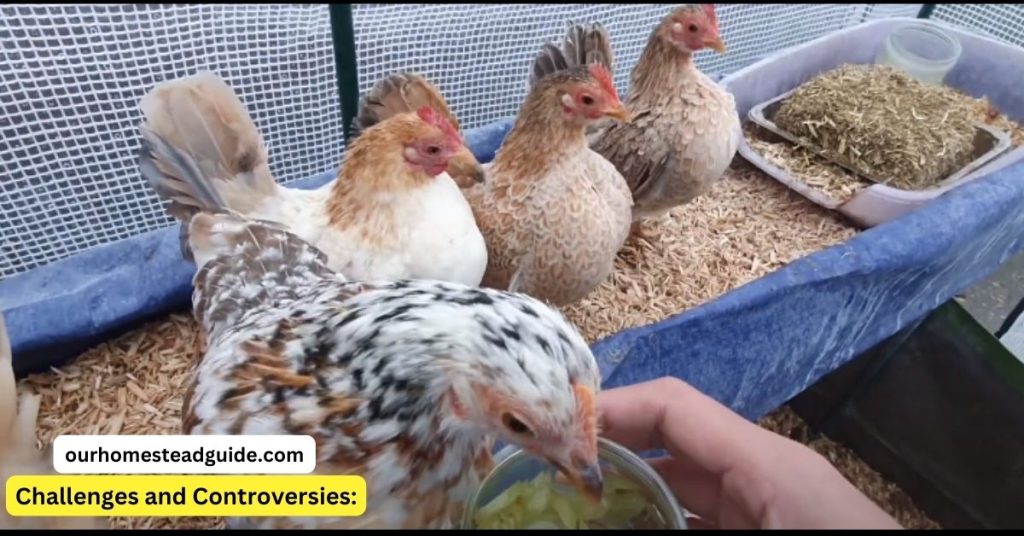
- Concerns regarding potential health consequences, particularly those about posture and bone development, have been raised by the emphasis on extreme physical features.
- Animal welfare organizations have expressed concerns over breeding methods that put appearance above health.
- Ethical breeding methods are prioritized by conscientious breeders, who also value good genetics and physical attractiveness.
Present Day and Future:
- Seramas are now prized show birds and beloved pets in many nations throughout the world.
- Breeding efforts continue to preserve the breed’s distinctive traits while enhancing the breed’s general health and disposition.
- The survival of the Serama depends on striking a balance between ethical care, conscientious breeding, and admiration for this enthralling little creation.
Size of Serama Chicken Breed
The world’s tiniest recognized breed of chicken, Seramas are prized for their cute look and little stature. This is a summary of their dimensions:
Roosters:
- Height: 6-8 inches (15-20 cm)
- Weight: 10-18 ounces (280-510 grams)
Hens:
- Height: 6-7 inches (15-18 cm)
- Weight: 8-14 ounces (227-397 grams)
Recall that the sizes of individual Seramas might vary significantly, and these are only rough ranges. In contrast, a normal breed of backyard chicken, such as a Rhode Island Red, might be twice as big as a Serama!
Here are some more specifics on the size of Serama:
Compact bodies: Seramas are often petite in stature due to their stocky body and short legs.
Vertical stance: They have a proud, erect attitude with their neck lifted high, which might emphasize how much larger they are than other hens.
Small features: They have tiny tails, toes, beaks, and combs, which all contribute to their endearingly fragile look.
Appearance Of The Serama Chicken Breed
The birds of the Serama breed are small in stature. Typically, they will be as little as six inches or as tall as just about 10 inches. They maintain an upright “V”-shaped stance while walking, even carrying their tail feathers in an erect position.
The Serama is built like a machine and has a complete breast. Seramas are known for having enormous wings relative to their body size and for holding their wings low such that they almost touch the ground. To fit their large, powerful bulk, Seramas have straight, medium- to long-length legs that are spaced far apart.
They give off the impression of being watchful or vigilant at all times. The Serama breed came to be known as the “fearless warrior” and “toy soldier” as a result of its look. The Serama breed’s tiny head contributes to its erect stance and tendency to carry it flung back.
The wattles of the Seramas are crimson, as is their solitary comb. Conversely, their eyes are bay red, and their earlobes might seem white or red. Compared to the Serama hens, the males have substantially bigger wattles and combs.
There is not much space between the body and the tail feathers of the Serama breed due to their very tiny backs.
Serama Chicken Breed Standards

The requirements for the Serama breed will vary depending on where you live—in Malaysia, the US, or the UK.
The Malaysian standard is the one that confuses Westerners the most. The breed is typically categorized according to its shape—slim, apple, ball, dragon, etc.—which causes this misunderstanding. The American standard was written with both thin and apple combined to make this easier to grasp for people who are not as familiar with the kinds.
The American Poultry Association formally recognized the Serama breed in 2011, with white being the approved color. Then, in 2018, black was also recognized officially. The Serama breed was recognized by the British Poultry Club in 2008.
The Serama breed may be found in four acceptable sizes and weight ranges when examining the standards:
- Micro: Up to 8 ounces for females and up to 13 ounces for men
- Males under 13 ounces and females under 12 ounces are permitted in class A.
- Males under 16 ounces and females under 15 ounces are permitted in the B class.
- Males under 19 ounces and females under 19 ounces are permitted in the C Class.
- Any Seramas that do not meet the previously stated acceptable weight and size guidelines will not be accepted.
Some flock keepers have successfully raised Seramas smaller than the micro norm, however, the bird suffers greatly as a result of this breeding practice.
For those smaller-sized hens, Seramas have challenges in both hatching and nurturing their offspring. Class A birds, for example, struggle far more to maintain a successful hatch rate.
Serama Chicken Temperament
Serama chickens are renowned for having extroverted, gregarious, inquisitive dispositions. They are frequently characterized as having “dog-like” levels of loyalty to their humans. Seramas can be taught orders and tricks, and they are also quite bright.
The following are some particular traits of the Serama temperament:
Friendly and outgoing: Seramas love being around people and are often quite sociable. They will gladly greet strangers with a chirp or cluck since they are frequently excited to meet them.
Curious: Seramas also have a strong sense of curiosity and like exploring their environment. They frequently look into novel items or intriguing individuals.
Self-assured: Seramas possess an exuberant and self-assured nature. They frequently challenge larger birds for supremacy and have no problem taking a stance against them.
Talkative: Another characteristic of Seramas is their talkativeness. They will frequently communicate with their owners and each other by chirping, clucking, and sometimes crowling.
Serama Egg Production and Broodiness
Since serama are little birds, their eggs are also small. It would take five Serama eggs to have the same size and composition as a single grade A egg purchased from a store.
It is well known that serama lay eggs somewhat often. While this varies greatly throughout strains, most are reported to lay up to four of their small eggs per week on average. This amount per week adds up to about 180–200 eggs laid annually.
The hue of the Seramas eggshells will range from pale to a deeper shade of brown, and every shade in between.
Seramas deposit a lot of eggs all year round, with November through February being the months when they are most fertile. For birds grown in more northern climates, however, this does not show to be the standard for fertility.
It’s well known that serama chickens are both devoted moms of their young and broody. Because of their small size, it is advisable to avoid giving broody females more than 4–6 eggs at a time because their petite bodies cannot adequately cover and seat them all.
Compared to other chicken breeds, the Serama breed’s chicks hatch faster. Seramas typically require a total of 19–20 days to incubate. The micro, the breed’s tiniest strain, has a hatching.
Compared to other chicken breeds, the Serama breed’s chicks hatch faster. Seramas typically require a total of 19–20 days to incubate. The microstrain, which is the smallest strain in the breed, hatches in about 15–17 days.
Regretfully, the Serama breed has a fatal trait from its Japanese bantam relatives. Roughly one-half of the hen’s offspring will not hatch if this gene is present.
The chick’s legs have become exceedingly short, which keeps it from being able to move into the proper position to hatch.
Serama chicks will reach adulthood sooner than other breeds, reaching 16–18 weeks of age, which means they will begin layering somewhat earlier. Still,
Serama chicks will reach adulthood sooner than other breeds, reaching 16–18 weeks of age, which means they will begin layering somewhat earlier. The chickens won’t fully mature, though, until they are between 15 and 18 months old.
Issues Known To Serama Chickens
Other than being from a more tropical environment, and some of them are known to have problems in cooler climes, seromas are not a breed known to have any particular health problems.
It is important to note that, in contrast to other breeds that typically molt once a year, Seramas molt continually. They don’t go through a full molt. Simply said, they occasionally tend to lose their feathers here and there.
Are Serama Chickens A Good Choice For You?
Whether or not Serama chickens are a good choice for you depends on a variety of factors. Here’s a breakdown to help you decide:
Reasons why Seramas might be a good choice for you:
- Restriction of space: Because of their diminutive size—imagine pigeon size—they work nicely in little backyards or urban homes. It is possible to house a few Seramas in a safe, enclosed run or indoor aviary.
- amiable and endearing: They have a reputation for having extroverted, gregarious dispositions; they frequently cherish social interactions and can form close bonds with their owners.
- Minimal upkeep: They may be easier to handle since they need less food and cleaning than bigger hens.
- distinct and enjoyable: Their unique looks and lively dispositions might add some fun and the odd into your life.
- Good layers of eggs: They may lay every day or every other day, despite their small size, so you might have enough eggs for breakfast.
Things to consider before getting Seramas:
- Special needs: They need more heat in colder areas since they are not resilient against the cold. Because they are little, they also require predator-proof shelter.
- Possible health problems: Because of their selective breeding, they may be more vulnerable to conditions including respiratory difficulty and limb weakness.
- More pricey than average: Because of their scarcity and popularity, seramas might be more costly than other chicken breeds.
- Not recommended for novices: They are better suited for seasoned chicken keepers due to their particular requirements and possible health risks.
- Noise: They cluck and crow like other chickens, which might be bothersome in neighborhoods.
The Take Away On Serama Chickens
Without a doubt, the Serama breed is the greatest option if you’re looking for an indoor pet. They are not just good in cramped areas, but they are also charming, perceptive, and occasionally chatty birds.
If you would rather, you may keep seramas outside as long as you make sure their coop and run are safe from predators. Their run area must also be maintained dry because they do not perform well in muddy or rainy situations.
Day 1-3: Hatching and Early Life
- The mother hen is returned to her brood of chicks.
- The first baby is already inquisitive and anxious to explore; he won’t stay beneath mom.
- On the first day, Mama gives the chicks a small plate of food to try eating. They receive water from bottle tops as they are too little to reach the water.
- Because they are lively and energetic, chicks need to be closely supervised.
Day 3-11: Growing and Learning
- As part of her ongoing feeding education, Mama has started offering the chicks egg yolks as treats.
- Based on their behaviors and personality, chicks are monitored and classified.
- The boldest and first to attempt new things is the firstborn chick.
- The ‘love to perch’ stage begins when the chicks begin to perch on day 11, although with considerable assistance.
- By watching and attempting to get food from the owner, they learn how to perch.
Exploring Outside and Dust Bathing
- The mother, Artemis, takes a dust bath as the family enjoys a bright day.
- Although oblivious to what the mother is doing during her dust bath, the chicks appear inquisitive.
- The chicks mimic Artemis, wishing to take a dust bath under her, demonstrating their reliance and camaraderie.
- Before continuing with her chores, Artemis waits patiently for the chicks to finish their dust bath.
Snuggling and Growing Up
- Even as they get bigger, chicks still go to their mothers for warmth and comfort.
- The chicks’ devotion is evident as they cuddle up under Artemis even after spending time outside.
- At two months old, one chick, nicknamed “baby roo,” nods off on the owner’s arm.
- To promote independence, Artemis starts pecking at the baby roo as the chicks become bigger.
Most Frequently Asked Questions!
What is a Serama chicken?
A little breed of chicken that originated from Malaysia is called Serama. They are renowned for their petite stature, kind disposition, and range of feather patterns and colors.
How small are Serama chickens?
Serama chickens are thought to be the world’s tiniest breed of chickens. Generally speaking, they weigh 1.2 to 1 pounds (450 to 545 grams).
What is the origin of Serama chickens?
Serama chickens are little birds that were produced via selective breeding and originated in Malaysia. As pets and exhibition birds, they have grown in popularity throughout the world.
Are Serama chickens good pets?
Yes, because of their tiny stature, amiable nature, and capacity to live both indoors and outdoors, Serama hens are frequently kept as pets.
Do Serama chickens lay eggs?
Although Serama chickens do lay eggs, they don’t produce as many as larger breeds of chicken. In proportion, the eggs are also tiny.
How do you care for Serama chickens?
Care for Serama hens is comparable to that of other breeds. They require a healthy diet, fresh water, cover from the elements, and defense against predators. They can require additional protection from severe weather because of their tiny stature.
Can Serama chickens be kept with other chickens?
Serama hens get along nicely with other hens in general, but it’s important to watch out that larger breeds don’t accidentally hurt them. It’s wise to keep an eye on interactions and create a secure atmosphere.
Are there different types of Serama chickens?
Yes, Serama hens have a variety of feather patterns and hues. For exhibiting reasons, the American Serama Association recognizes several classes and divisions, including A Class, B Class, and C Class, each with certain weight and size requirements.
How long do Serama chickens live?
Serama hens may live for five to ten years, or even longer if given the right care. Their living circumstances, food, and general health care all affect how long they live.
Can I show Serama chickens in competitions?
Indeed, Serama chickens are frequently displayed in poultry contests. They are judged according to certain criteria and classifications, such as size, posture, and feather quality.
you may also like this article.

